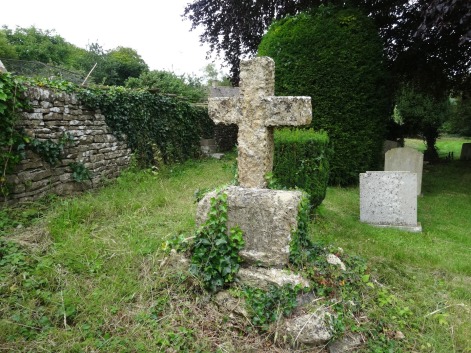During the course of my research I often come across interesting things that aren’t necessarily relevant but stick in my mind anyway – and often send me off on tangents of discovery. Lately I’ve been writing up a session I’m teaching on burial practice in the early Neolithic. This has turned out to be a useful exercise in re-evaluating the literature review from my PhD upgrade and identifying things that could be added or changed for my final thesis, which is a work in progress. It was while doing a section on skeletonisation and disarticulation that a couple of examples of the re-interment of human remains came back to me.
The first one was Jackbarrow (aka Jackbarroew), a long barrow at Duntisbourne Abbots in Gloucestershire. It was opened in 1875 and destroyed so that a rickyard could be built in its place (I had to look rickyard up; it’s a farm yard where hayricks/stacks are stored). When I Googled “jackbarrow” I got more Johnny Depp than I’d bargained for and also discovered that there’s an author called Jack Barrow who’s written a book called The Hidden Masters and the Unspeakable Evil, “a hard drinking occult adventure with gambling and trouser issues”. “Imagine Douglas Adams writing a Hitchhiker’s Guide to the Occult” it says on Amazon, but I digress (although I may well give it a read).

The re-interred human remains of Jackbarrow lie here
Anyway, the mound was originally thought to have been a round barrow but later excavations led to a revised interpretation of a false entrance long barrow extending to about 156 ft (47 m) in length with possible lateral chambers. When the barrow was excavated, the human remains from within it were removed and then reinterred in the churchyard of St Peter’s at Duntisbourne Abbots. The burial place is marked with a cross constructed of stones from the barrow itself and inscribed with the words: These rough stones taken from the barrow Jack Barrow Farm cover the human remains found therein when it was opened in 1875. At first I tutted at the burial of non-Christians in this way but then I thought, what else would they have done in the 19th century? And at least they afforded these prehistoric people a dignified place of rest.
Mind you, not all the human remains from Jackbarrow were reinterred in the churchyard. A number of them were taken to the Nailsworth Mechanics’ Institute and the skull of one is apparently on display today in the Museum in the Park in Stroud. The institute in Nailsworth, incidentally, was one of a type of philanthropic endeavour set up in the 19th century to educate working men and keep them away from the evils of drinking and gambling.
The second case of reinterment I recalled was that of the bodies from the crypt of St George the Martyr in Southwark, London. As is usually the case with churches, it has a chequered history of repairs and rebuilds, starting from its first inception at the beginning of the 12th century, and in 1732 the building was in such a bad way that it was deemed too ‘dangerous for the inhabitants of the Parish to attend the Worship of God therein’ and an Act of Parliament authorised the building of a replacement, which was completed in 1735. In 1899, for some reason, the crypt was cleared out and 1,484 coffins were removed and re-interred an hour away at Brookwood Cemetery in Woking, Surrey. Brookwood was once the biggest cemetery in the world and remains the biggest in western Europe. Since it opened for business in 1854, 250,000 people have been buried there, so I guess in 1899 a few more wasn’t going to make too much difference. In the case of the St George the Martyr burials, the area where they were relaid to rest is marked with a monumental replica of the obelisk in St George’s Circus, Southwark bearing the inscription: IN MEMORIUM. THE HUMAN REMAINS FROM THE CRYPT OF THE CHURCH OF ST GEORGE THE MARTYR, SOUTHWARK, WERE RE-INTERRED IN THIS SITE OCTOBER 1899 IN ACCORDANCE WITH AN ORDER IN COUNCIL. The replica seems a thoughtful way of uniting the old parish and resting place with the new. Unfortunately, however, the ground below the monument has subsided in the intervening years (indeed the ground at Brookwood is generally somewhat spongy) and the obelisk now languishes on the ground.

Memorial to the burials from the crypt at St George the Martyr, Southwark
Further reading
http://www.brookwoodcemetery.com/
http://www.stgeorge-themartyr.co.uk/history/
Photograph of Jackbarrow grave reproduced with kind permission from Dorothy Prosser (http://circleoftheyear.blogspot.co.uk/search?q=jack+barrow)
Photograph of St George the Martyr memorial: author’s own Brookwood Cemetery: an album
Welcome back! I quite fancy that book…
LikeLike